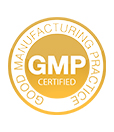
Good manufacturing practice
Good
manufacturing practices (GMP) are the
practices required in order to conform to the guidelines recommended by
agencies that control authorization and licensing for manufacture and sale of
food, drug products, and active pharmaceutical products. These guidelines
provide minimum requirements that a pharmaceutical or a food product
manufacturer must meet to assure that the products are of high quality and do
not pose any risk to the consumer or public.
Good
manufacturing practices, along with good agricultural practices, good laboratory practices and good clinical practices, are overseen by
regulatory agencies in the United States, Canada, Europe, China, and other
countries.
All
guidelines follow a few basic principles:
·
Manufacturing facilities must
maintain a clean and hygienic manufacturing area.
·
Controlled environmental
conditions in order to prevent cross contamination of food or drug product from
adulterants that may render the product unsafe for human consumption.
· Manufacturing
processes are clearly defined and controlled. All critical processes are validated to ensure
consistency and compliance with specifications.
·
Manufacturing processes are
controlled, and any changes to the process are evaluated. Changes that have an
impact on the quality of the drug are validated as necessary.
· Instructions
and procedures are written in clear and unambiguous language. (Good Documentation Practices)
·
Operators are trained to carry
out and document procedures.
· Cross
contamination with unlabelled
major allergens is prevented.
·
Records are made, manually or
by instruments, during manufacture that demonstrate that all the steps required
by the defined procedures and instructions were in fact taken and that the
quantity and quality of the food or drug was as expected. Deviations are
investigated and documented.
·
Records of manufacture
(including distribution) that enable the complete history of a batch to be
traced are retained in a comprehensible and accessible form.
·
The distribution of the food
or drugs minimizes any risk to their quality.
·
A system is available for
recalling any batch from sale or supply.
·
Complaints about marketed
products are examined, the causes of quality defects are investigated, and
appropriate measures are taken with respect to the defective products and to
prevent recurrence.
|